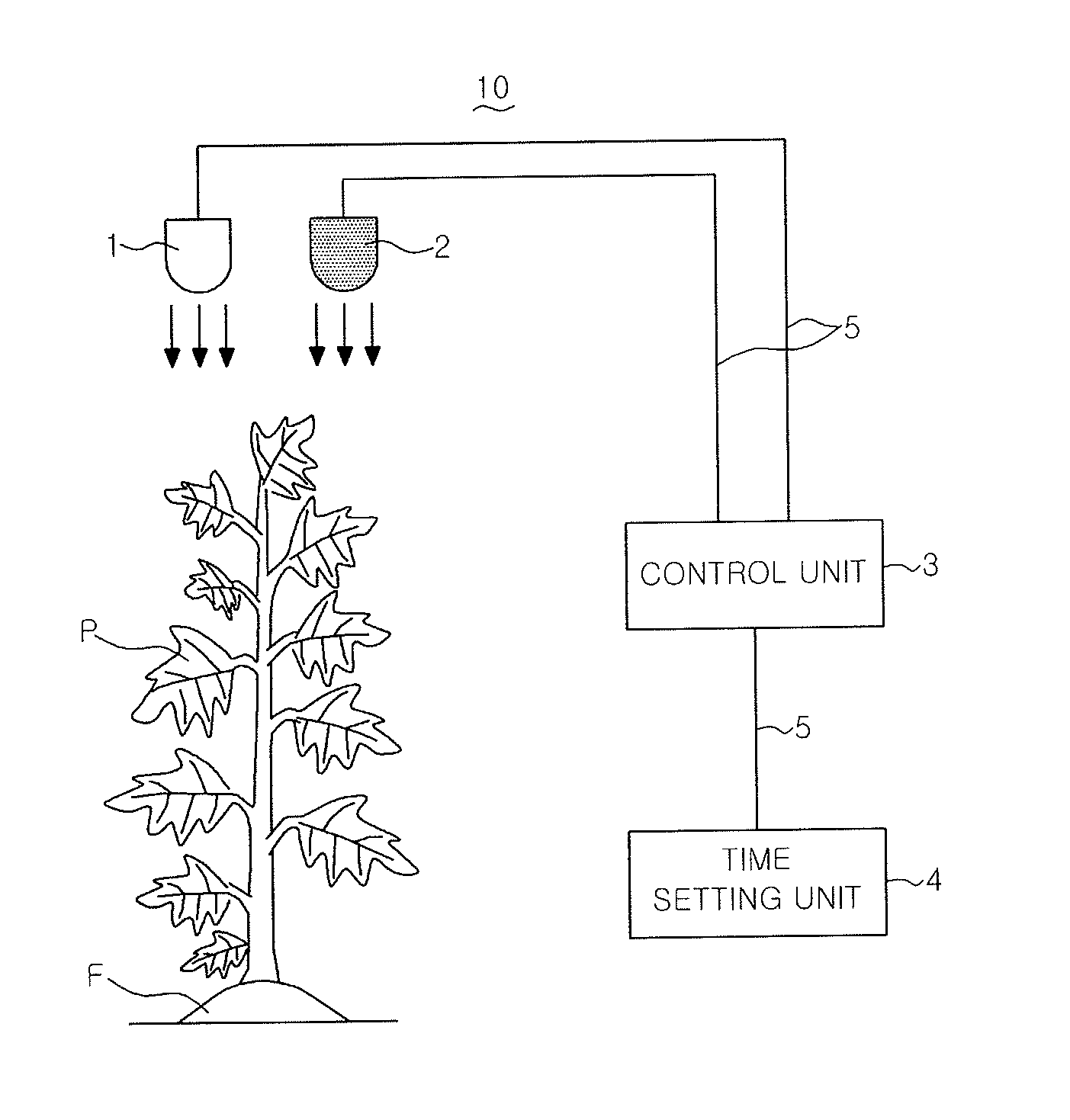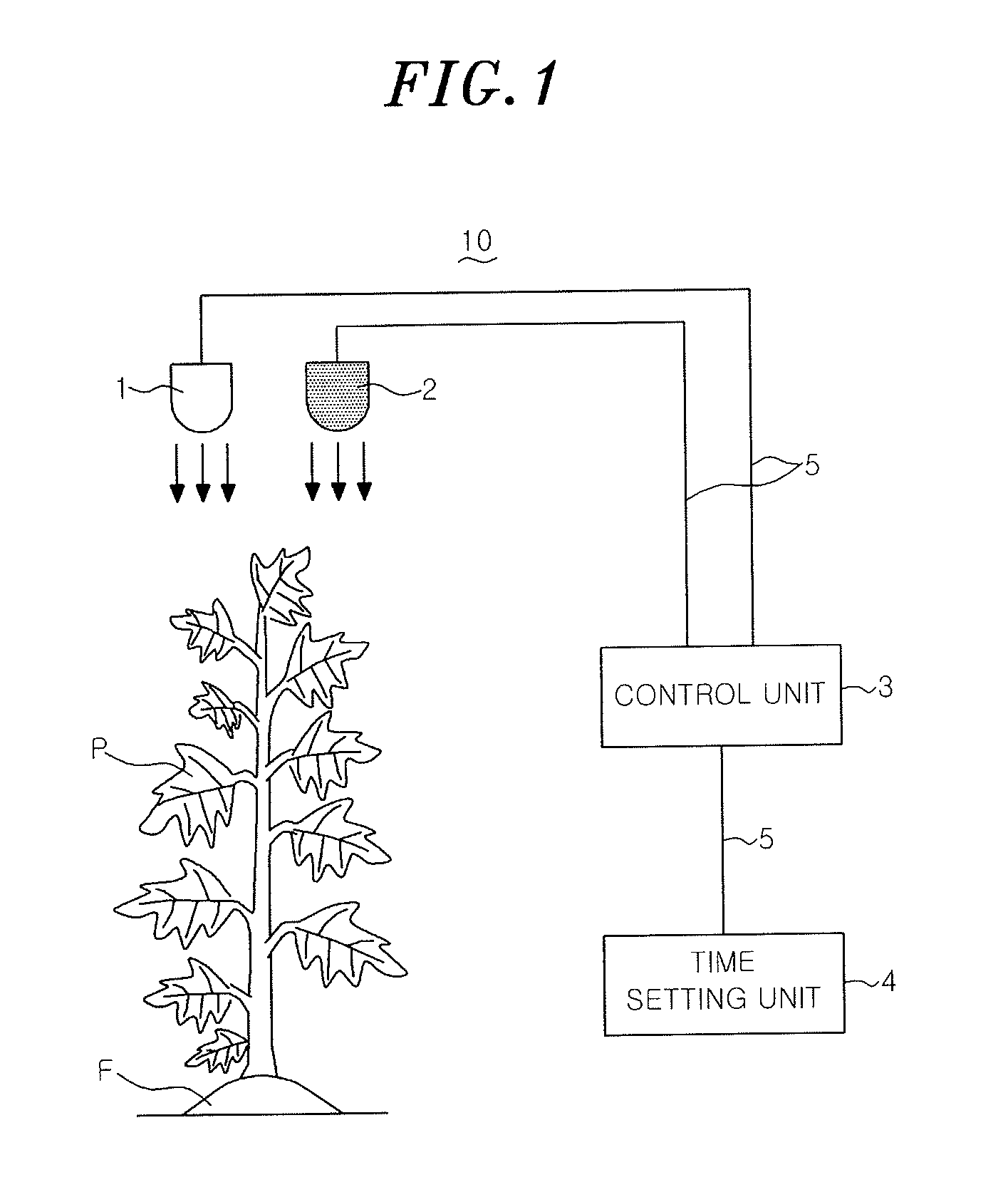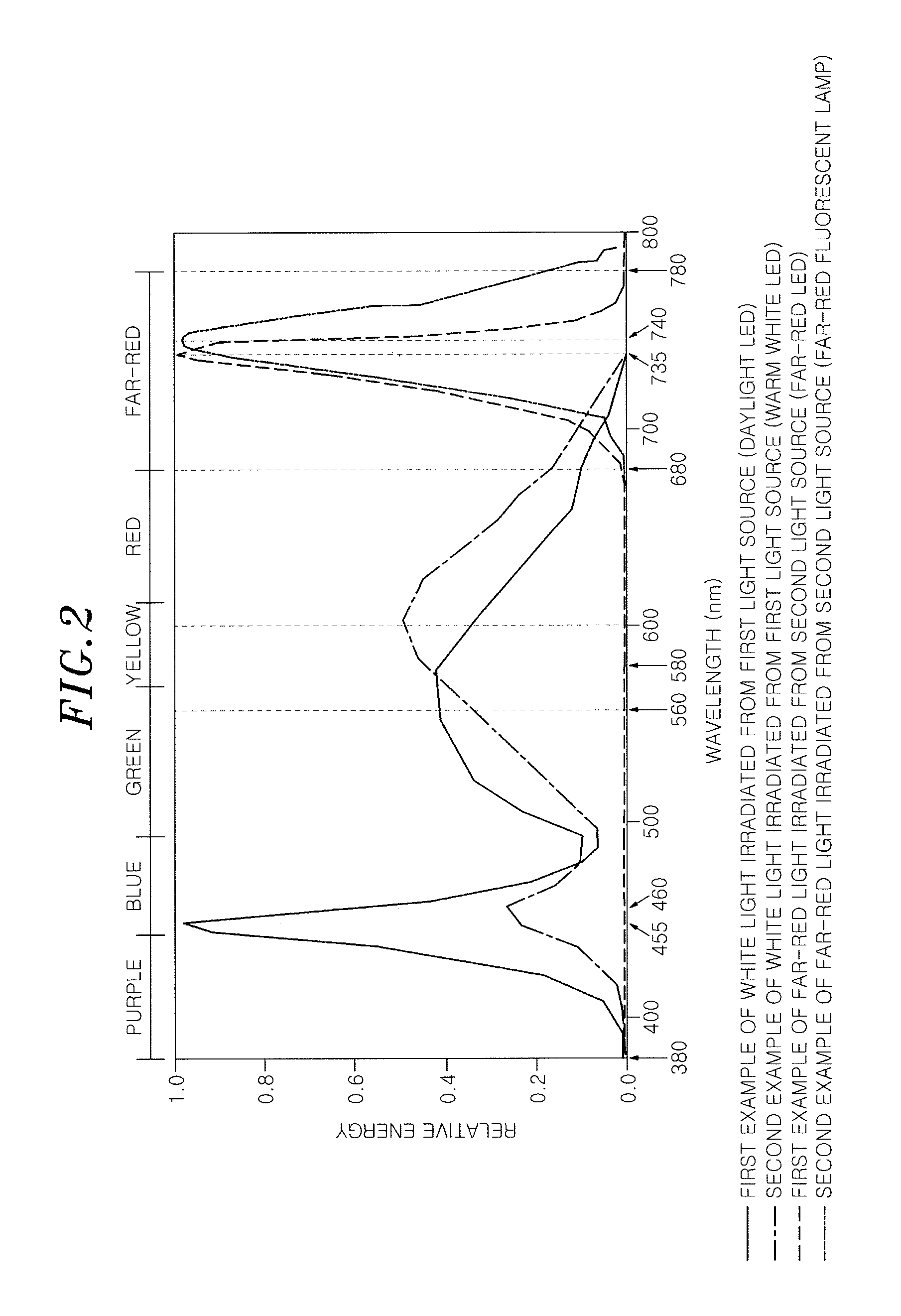Plant growing system
a plant growing system and plant technology, applied in the field of plant growing systems, can solve the problems of reducing work efficiency, difficult for workers to visually see, and not taking into account the flower bud differentiation of plants, so as to improve the visibility of plants, reduce work efficiency, and promote plant growth.
- Summary
- Abstract
- Description
- Claims
- Application Information
AI Technical Summary
Benefits of technology
Problems solved by technology
Method used
Image
Examples
examples
[0035]The chrysanthemum was planted in the end of November and was cultivated up to March of the next year for about 4 months. Immediately after the planting, in order to maintain nutrition growth of the chrysanthemum, four hours discontinuation of a dark phase was carried out by lighting on an incandescent lamp at midnight until the mid-January (approximately 45 days after starting the planting, in which the chrysanthemum has a height of 20 cm or more). Thereafter, the chrysanthemum was transferred to the reproduction growth, and simultaneously the light irradiation to the chrysanthemum was started by the plant growing system 10. The light irradiation was continued until chrysanthemum bloomed.
[0036]As shown in FIG. 6, in this example, the chrysanthemum was irradiated with white light emitted from the first light source 1 for 3 hours from 18:00 before sunset (19:00) to 21:00. That is to say, the chrysanthemum was irradiated with the white light emitted from the first light source 1 ...
PUM
 Login to View More
Login to View More Abstract
Description
Claims
Application Information
 Login to View More
Login to View More - R&D
- Intellectual Property
- Life Sciences
- Materials
- Tech Scout
- Unparalleled Data Quality
- Higher Quality Content
- 60% Fewer Hallucinations
Browse by: Latest US Patents, China's latest patents, Technical Efficacy Thesaurus, Application Domain, Technology Topic, Popular Technical Reports.
© 2025 PatSnap. All rights reserved.Legal|Privacy policy|Modern Slavery Act Transparency Statement|Sitemap|About US| Contact US: help@patsnap.com



